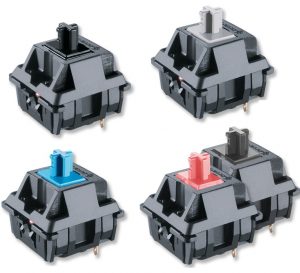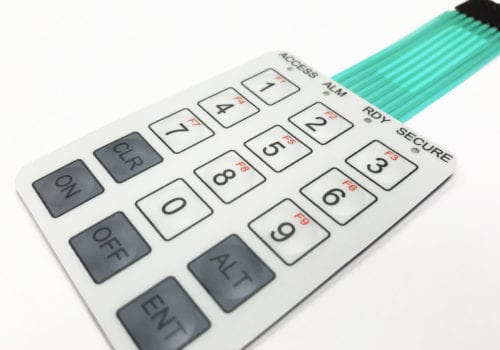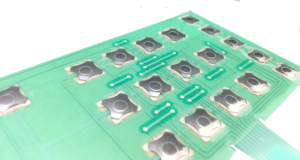The Complete Guide to Membrane Switch Technology and Its Applications
The Complete Guide to Membrane Switch Technology and Its Applications
Blog Article
Comprehending the Functionality of Membrane Switches Over for Interface Instruments
The capability of membrane switches over stands for a significant advancement in interface style, integrating effectiveness with visual flexibility. These buttons run via a multi-layered framework that translates user communications right into electric signals, enabling both small formats and strength against environmental aspects. As sectors progressively prioritize user experience, recognizing the subtleties of membrane layer button modern technology comes to be crucial. What implications do these improvements hold for future applications, and exactly how might they redefine customer communications across numerous devices?
What Are Membrane Buttons?
Membrane buttons are innovative user interface tools that facilitate user interaction with electronic equipment. These flexible elements are composed of several layers, including a visuals overlay, spacer, and a published circuit layer. The design allows for a seamless combination right into numerous electronic tools, improving both the aesthetic and practical aspects of interface.
Membrane layer switches are frequently employed in a vast variety of applications, from household devices to industrial machinery and medical devices. Their building commonly includes a thin account, making them an optimal choice for portable layouts. The responsive feedback provided by these switches can be engineered to meet particular customer choices, ensuring effective interaction in between the individual and the device.
Toughness is an additional substantial advantage of membrane switches, as they are immune to dirt, moisture, and chemicals, which improves their lifespan popular atmospheres. Additionally, these switches can be tailored in regards to form, dimension, and visuals design, enabling branding and user-specific features. On the whole, membrane layer switches represent a sensible service for boosting user experience in digital gadgets, incorporating performance with aesthetic appeal in a reliable manner.
Exactly How Membrane Changes Work
Operating on a straightforward principle, membrane changes use a layered building to sign up individual input efficiently. Each button includes several layers, including a printed circuit layer, a spacer layer, and a top visuals layer, which are developed to collaborate flawlessly. When an individual presses the leading layer, it compresses the spacer layer, bringing the conductive elements of the circuit layer into call with each various other.
This contact produces a closed circuit, signaling the gadget to execute a specific function. The design permits various arrangements, including tactile comments, which can improve the individual experience by giving a physical feeling upon activation. The products made use of in membrane layer buttons often include flexible substrates, such as polyester or polycarbonate, which guarantee durability and strength against wear and tear.

Secret Benefits of Membrane Layer Buttons

Another substantial advantage is their compactness. Membrane layer switches are thin and light-weight, which makes it possible for producers to conserve room in their tools without sacrificing capability. This feature is specifically beneficial in applications where weight and volume are vital factors to consider.
Furthermore, membrane switches are immune to dirt, wetness, and chemicals, boosting their durability. This resilience prolongs their life expectancy and reduces the demand for frequent replacements, causing price savings in time.
Furthermore, the responsive comments supplied by membrane layer switches can be enhanced to improve individual communication. They can include functions such as raised buttons or distinct clicks, enhancing use and individual experience.
Applications Across Industries
Individual interface devices using membrane switches prevail in a vast variety of markets, showcasing their versatility and capability. Membrane Switch. In the medical industry, membrane layer switches are important to devices such as diagnostic devices and person surveillance systems, where their resilience and simplicity of cleaning are important for keeping health standards. In a similar way, in the automotive sector, these buttons are used in dashboard controls and infomercial systems, supplying a sleek and modern user interface for users.
Additionally, the consumer electronics field gain from membrane buttons in devices and portable tools, where portable design and user-friendly user interfaces enhance customer experience. Industrial applications likewise take advantage of membrane layer changes for control board in machinery and automation systems, emphasizing their effectiveness and resistance to harsh settings.
In the aerospace and protection sectors, membrane layer switches are made use of in cockpit controls and tools, where integrity and efficiency under severe conditions are paramount. In addition, the pc gaming sector progressively integrates membrane switches in controllers and gallery makers, contributing to an engaging customer experience. Generally, the versatility of membrane layer switches enables their widespread usage across numerous markets, emphasizing their significance in contemporary interface design.
Future Trends in Membrane Change Modern Technology

In addition, the usage of advanced products, such as polycarbonate and polyester movies, is expected to climb, offering improved resilience and resistance to ecological stress factors. These products contribute to the overall long life of membrane buttons, making them appropriate for harsher industrial applications.
Additionally, the consolidation of smart technology, consisting of IoT connectivity, will Read More Here allow membrane layer switches to connect with various other tools and systems, assisting in an extra interactive customer experience. This fad aligns with the growing need for wise devices across numerous fields, from health care to customer electronics.
Last but not least, modification alternatives are prepared for to increase, allowing suppliers to create bespoke solutions customized to specific customer requirements and choices. These developments will certainly position membrane switches as vital elements in the development of interface modern technology.
Verdict
In conclusion, membrane layer switches stand for a critical innovation in user interface innovation, using a trustworthy and versatile remedy for varied electronic applications. Their split construction helps with portable design, while features such as tactile feedback boost individual communication. The resilience against ecological elements better solidifies their utility throughout several industries. As advancements in material science and touch picking up innovations continue, the performance and applicability of membrane buttons are expected to expand, reinforcing their value in modern-day electronic tools.
Report this page